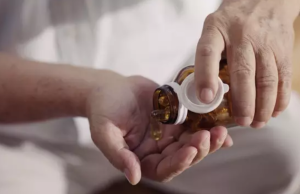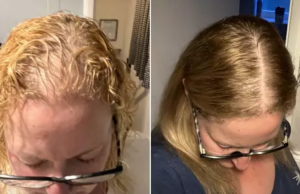
A Silent Yet Dangerous Condition
Non-alcoholic fatty liver disease (NAFLD) often develops silently, showing no symptoms in its early stages. However, if left untreated, it can progress and result in serious complications, including irreversible liver damage.
Early detection is vital, and surprisingly, the skin may reveal important clues about the presence of this disease.
Skin as a Window Into Liver Health
As highlighted by MedlinePlus, liver dysfunction can manifest through noticeable skin changes. The liver plays a crucial role in filtering toxins and processing various substances.
When it fails to do so effectively, the body, especially the skin, can react in distinct ways. These external signs should not be overlooked.
Key Skin Changes Linked to Fatty Liver Disease
1. Jaundice (yellowing of the skin and eyes)
Caused by the liver’s inability to break down bilirubin, a pigment formed from red blood cell breakdown. Accumulation of bilirubin leads to a yellowish tone in the skin and whites of the eyes.

2. Persistent itching (pruritus)
When toxins build up due to poor liver function, they may trigger intense and ongoing itching.
3. Dark patches (acanthosis nigricans)
These typically appear on the neck or underarms and are associated with insulin resistance, a condition frequently linked to NAFLD.
4. Easy bruising or bleeding
Liver damage affects the production of clotting proteins, making the skin more prone to bruising or bleeding with minimal impact.
5. Sallow or pale complexion
This indicates toxin buildup in the body and is another visual cue of compromised liver function.
6. Visible veins (vasodilation)
Hormonal imbalances from liver impairment can dilate blood vessels, causing small, noticeable veins on the skin.
Additional Symptoms to Monitor
Beyond skin-related signs, NAFLD may cause:
- Chronic fatigue
- Decreased appetite
- Nausea
- Swelling in the abdomen and legs
- Mental confusion
- Digestive tract bleeding

The Importance of Timely Action
Medical professionals stress the importance of early diagnosis and lifestyle changes to prevent further liver damage. Paying attention to these early warning signs and seeking medical guidance can help manage and potentially reverse the progression of the disease.
Dietary Recommendations to Support Liver Health
Dr. Joseph Salhab, a gastroenterologist based in Florida, recommends six foods that may help protect the liver and prevent fat accumulation:
Avocados: Rich in healthy fats and antioxidants, these support liver repair and function.
Olive oil: Its monounsaturated fats aid in reducing liver inflammation and promoting healthy cholesterol levels.
Oily fish (like salmon or herring): Contain omega-3 fatty acids known for their anti-inflammatory properties.
Nuts (especially walnuts and almonds): Packed with essential fats, proteins, and vitamins that boost overall wellness.
Green tea: Offers strong antioxidant support to protect liver cells from damage.
Coffee: Beyond its energizing effects, it has antioxidants that may help prevent liver disease.

While conditions like obesity, diabetes, high blood pressure, and high cholesterol increase the risk of NAFLD, a balanced diet and early symptom recognition remain key to prevention and management.
















